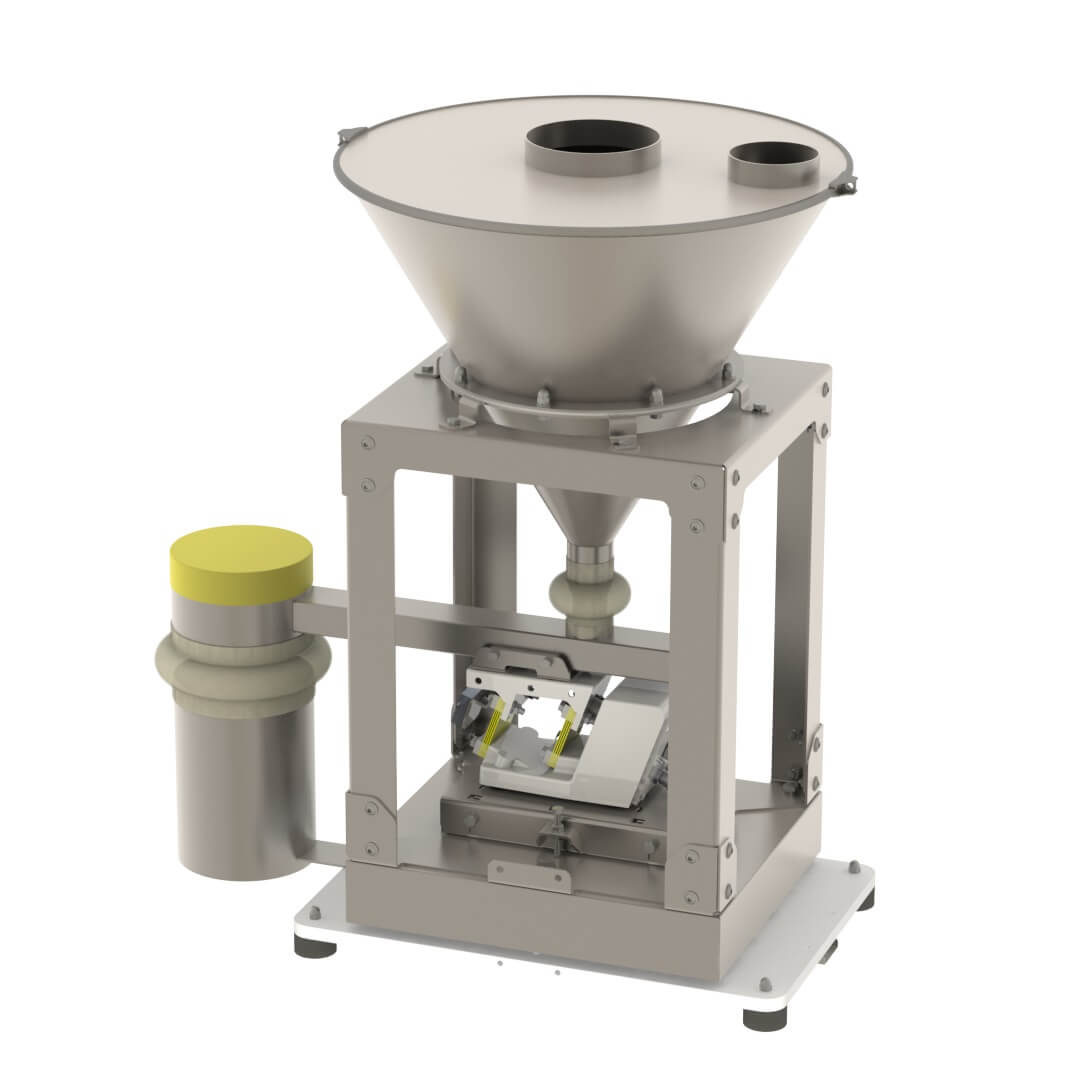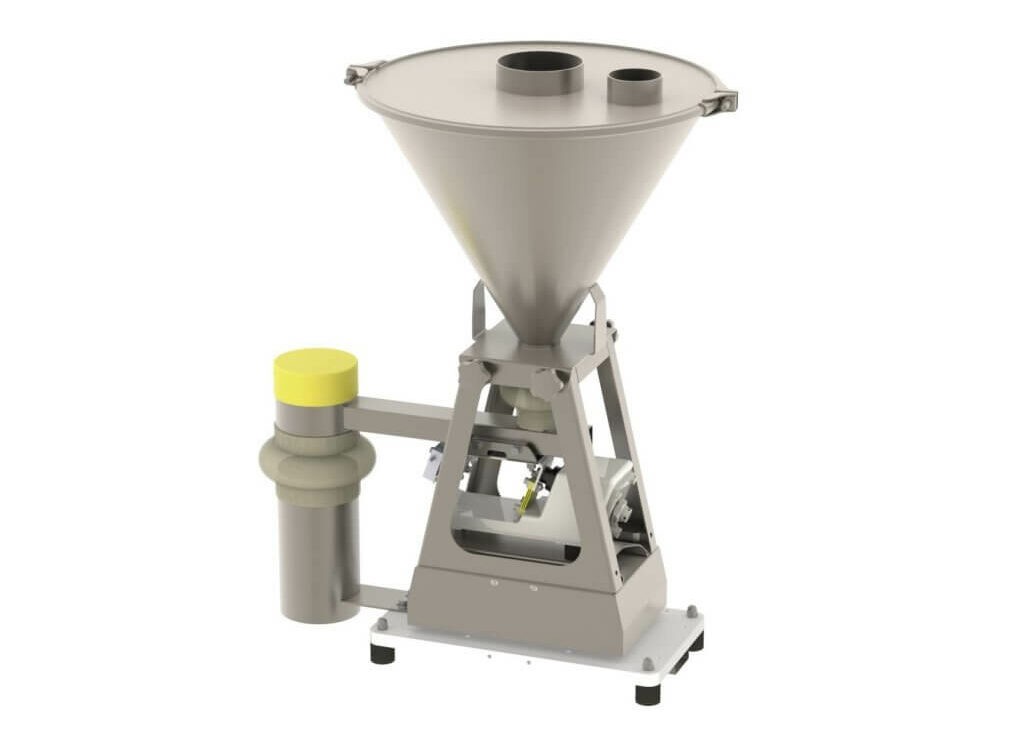- InterProcess Sp. z o.o.
Vibratory feeders
Whether you are interested in dispensing a fixed portion of material or your process requires a constant flow, we have a solution for you. Vibratory feeders, operating in loss-in-weight mode, are an interesting solution for flows of 0.1 to 1000 [l/h].
Vibratory feeders usually operate on the principle of measuring lost weight and use resonance frequency technology, which allows for precise control of the feed rate.
The first step is to define the parameters of the material, such as: grain size, bulk density, moisture content, angle of repose, and the required portion in the desired time interval or the required mass flow. Based on the information obtained, we select the type of feeder depending on the type of material.
Vibratory feeders are the ideal solution for feeding abrasive materials in the form of granules and coarse powders, as well as brittle materials such as flakes and fibers (including glass). They are perfect for free-flowing materials in any industry, including food, chemical, and pharmaceutical. Thanks to the absence of moving parts, there is no risk of fragile material being damaged during dosing.
Offer
DVC(45-60)
The DVC gravimetric vibratory feeder can feed bulk materials with various parameters, even those that are difficult to flow and tend to clump and stick. It is a universal device for both continuous and batch feeding.
The DVC model is a gravimetric vibrating feeder, i.e., it has feedback in the form of a scale. It is used for fast and accurate feeding of free-flowing bulk materials, flakes, and pellets. Thanks to the absence of moving parts, there is no risk that fragile material may be damaged during feeding. A conical hopper acts as a reservoir, ensuring uniform emptying during dosing. An electromagnetic vibration drive with feedback efficiently performs dosing and allows the resonance frequency to be determined. The scale is based on a single C3 class strain gauge sensor made of stainless steel or aluminum, with an IP66 protection rating. The modular design allows for easy disassembly for cleaning. The device has a cover equipped with filling and ventilation ports.
Application:
- abrasive materials in the form of granules and coarse powders, as well as brittle materials such as flakes and fibers (including glass fibers).
Specification:
- capacity from 0.1 to 1000 [l/h],
- dosing accuracy with a maximum error of less than 0.5%,
- no moving parts,
- electromagnetic drive 230 [V] AC, 50 [Hz],
- tank capacity from 15 to 90 [l],
- easy disassembly,
- parts in contact with the material made of stainless steel 1.4301 (AISI304) or 1.4404 (AISI316L), other parts powder coated (optionally also stainless steel polished, welds ground in hygienic version),
- for automatic and manual filling,
- material contact parts: glass bead blasted or polished,
- can be used as a stand-alone device or in mixing lines, also as part of packaging systems.


Do ściągnięcia:
Principle of operation
Vibratory loss-in-weight feeders (LIW) operate on the principle of continuously measuring the weight of the entire feeding assembly with material placed on strain gauge sensors. The weighed assembly is flexibly connected to the filling devices and the discharge pipe to eliminate external forces. During continuous or batch dosing, the loss in weight from the device is measured and the mass flow of the material is determined on this basis. The PID controller used in the system controls the dosing speed depending on the required flow. When the amount of material in the hopper decreases, it is replenished without interrupting the dosing process. At this time, the dispenser switches to volumetric mode, i.e., it feeds the material at the speed recorded just before filling the tank. After filling, gravimetric mode is restored. The advantages of static weighing are used here in continuous dosing using a screw or vibratory feede
Do you need a feeder?
Contact us and our engineers will prepare the optimal solution tailored to your process. We offer the possibility of testing your material on our device.
Why Choose Our Solutions?
Individual approach – we design each system to meet the customer’s needs.
Comprehensive implementation – from design to commissioning and service.
Proven components – only reliable, industrial solutions.
Experience in many industries – food, chemical, pharmaceutical, construction.
Safety and hygiene – systems compliant with ATEX, HACCP, and GMP standards.
Technical support and service – with quick response, also available 24/7.